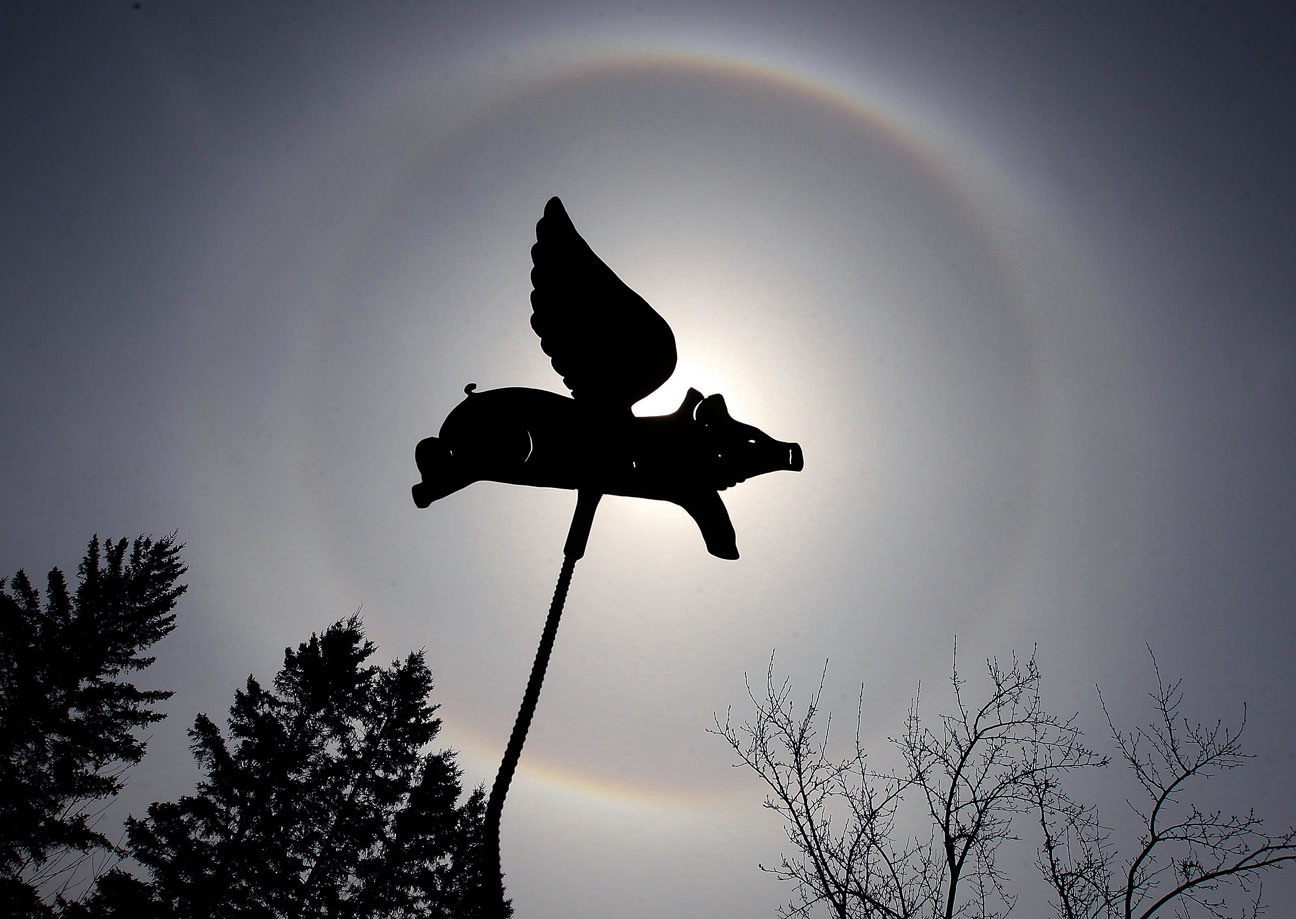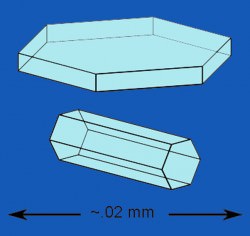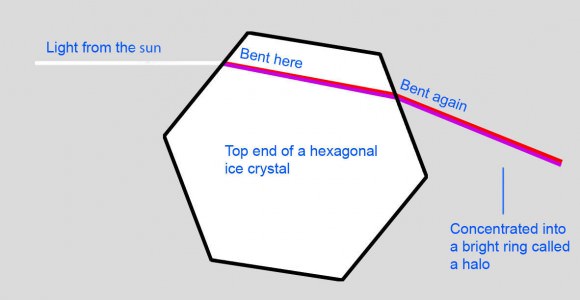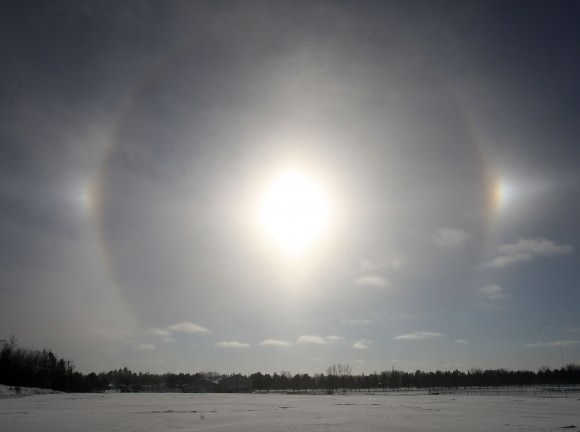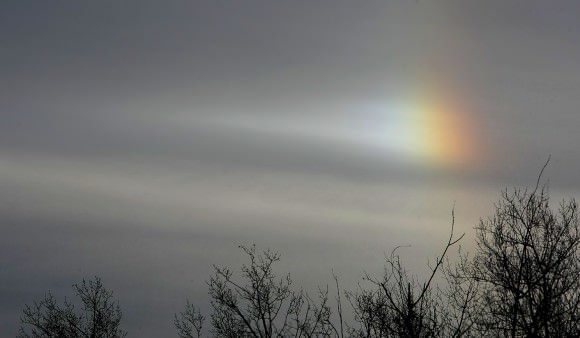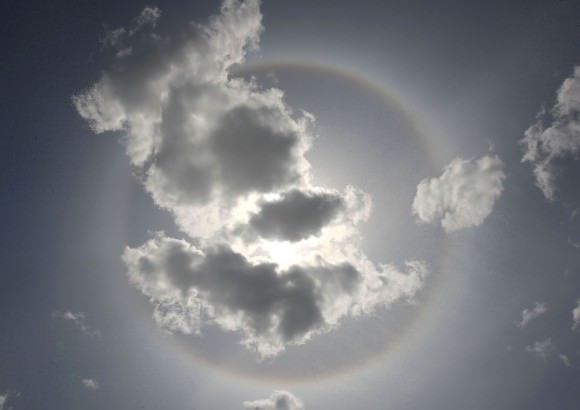Back in 1993, Carl Sagan encountered a puzzle. The Galileo spacecraft spotted flashes coming from Earth, and nobody could figure out what they were. They called them ‘specular reflections’ and they appeared over ocean areas but not over land.
The images were taken by the Galileo space probe during one of its gravitational-assist flybys of Earth. Galileo was on its way to Jupiter, and its cameras were turned back to look at Earth from a distance of about 2 million km. This was all part of an experiment aimed at finding life on other worlds. What would a living world look like from a distance? Why not use Earth as an example?
Fast-forward to 2015, when the National Oceanographic and Atmospheric Administration (NOAA) launched the Deep Space Climate Observatory (DSCOVER) spacecraft. DSCOVER’s job is to orbit Earth a million miles away and to warn us of dangerous space weather. NASA has a powerful instrument on DSCOVER called the Earth Polychromatic Imaging Camera (EPIC.)
Every hour, EPIC takes images of the sunlit side of Earth, and these images can be viewed on the EPIC website. (Check it out, it’s super cool.) People began to notice the same flashes Sagan saw, hundreds of them in one year. Scientists in charge of EPIC started noticing them, too.
One of the scientists is Alexander Marshak, DSCOVR deputy project scientist at NASA’s Goddard Space Flight Center in Greenbelt, Maryland. At first, he noticed them only over ocean areas, the same as Sagan did 25 years ago. Only after Marshak began investigating them did he realize that Sagan had seen them too.
Back in 1993, Sagan and his colleagues wrote a paper discussing the results from Galileo’s examination of Earth. This is what they said about the reflections they noticed: “Large expanses of blue ocean and apparent coastlines are present, and close examination of the images shows a region of [mirror-like] reflection in ocean but not on land.”
Marshak surmised that there could be a simple explanation for the flashes. Sunlight hits a smooth part of an ocean or lake, and reflects directly back to the sensor, like taking a flash-picture in a mirror. Was it really that much of a mystery?
When Marshak and his colleagues took another look at the Galileo images showing the flashes, they found something that Sagan missed back in 1993: The flashes appeared over land masses as well. And when they looked at the EPIC images, they found flashes over land masses. So a simple explanation like light reflecting off the oceans was no longer in play.
“We found quite a few very bright flashes over land as well.” – Alexander Marshak, DSCOVR Deputy Project Scientist
“We found quite a few very bright flashes over land as well,” he said. “When I first saw it I thought maybe there was some water there, or a lake the sun reflects off of. But the glint is pretty big, so it wasn’t that.”
But something was causing the flashes, something reflective. Marshak and his colleagues, Tamas Varnai of the University of Maryland, Baltimore County, and Alexander Kostinski of Michigan Technological University, thought of other ways that water could cause the flashes.
The primary candidate was ice particles high in Earth’s atmosphere. High-altitude cirrus clouds contain tiny ice platelets that are horizontally aligned almost perfectly. The trio of scientists did some experiments to find the cause of the flashes, and published their results in a new paper published in Geophysical Research Letters.
“Lightning doesn’t care about the sun and EPIC’s location.” – Alexander Marshak, DSCOVR Deputy Project Scientist
As their study details, they first catalogued all of the reflective glints that EPIC found over land; 866 of them in a 14 month period from June 2015 to August 2016. If these flashes were caused by reflection, then they would only appear on locations on the globe where the angle between the Sun and Earth matched the angle between the DSCOVER spacecraft and Earth. As the catalogued the 866 glints, they found that the angle did match.
This ruled out something like lightning as the cause of the flashes. But as they continued their work plotting the angles, they came to another conclusion: the flashes were sunlight reflecting off of horizontal ice crystals in the atmosphere. Other instruments on DSCOVR confirmed that the reflections were coming from high in the atmosphere, rather than from somewhere on the surface.
“The source of the flashes is definitely not on the ground. It’s definitely ice, and most likely solar reflection off of horizontally oriented particles.” -Alexander Marshak, DSCOVR Deputy Project Scientist
Mystery solved. But as is often the case with science, answering one question leads to a couple other questions. Could detecting these glints be used in the study of exoplanets somehow? But that’s one for the space science community to answer.
As for Marshak, he’s an Earth scientist. He’s investigating how common these horizontal ice particles are, and what effect they have on sunlight. If that impact is measurable, then it could be included in climate modelling to try to understand how Earth retains and sheds heat.
Sources:


